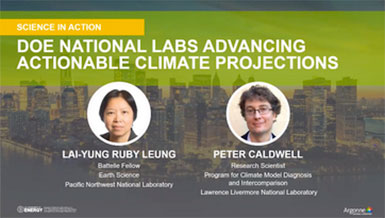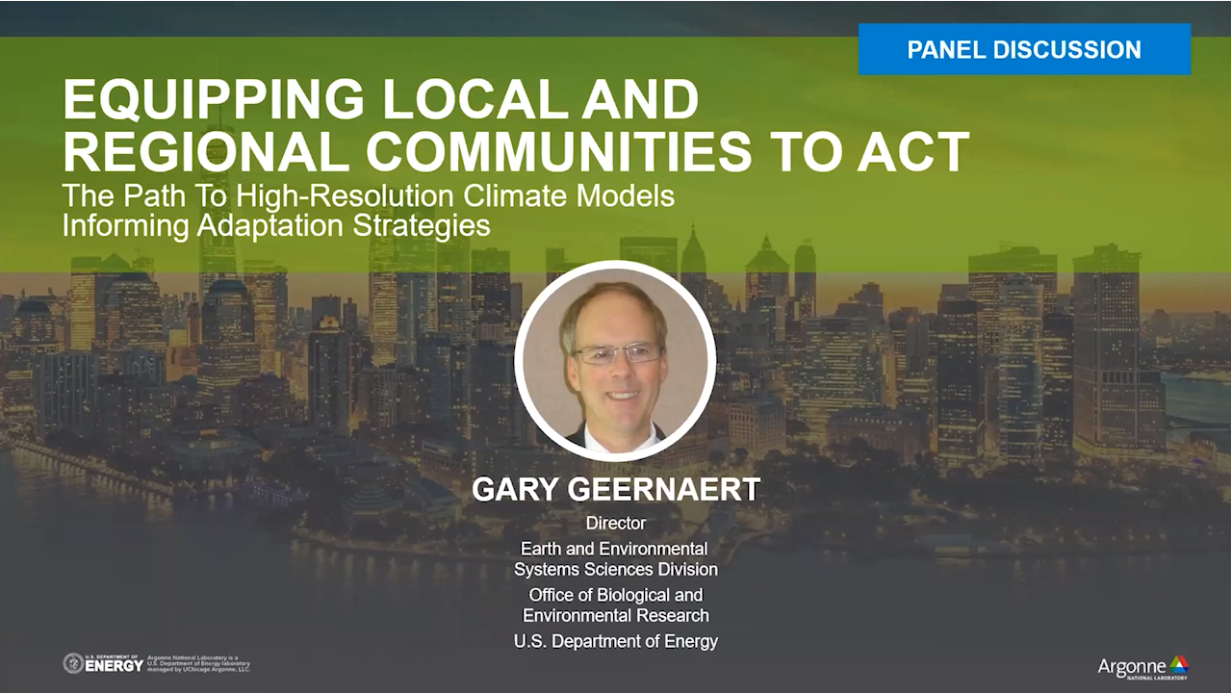E3SM Participates in Climate Resilience Conference

Dr. Gary Geernaert, the director of the Earth and Environmental Systems Sciences Division (EESSD) was one of the invited speakers who presented “The Path to High-Resolution Climate Models Informing Adaptation Strategies”.
He discussed four challenges for using climate modeling tools to examine resilience: (1) poor spatial resolution which is limited by inadequate computing (which is improving), (2) inadequate representation of processes in models, specifically those related to cloud aerosols, the water cycle, biogeochemistry in the ecosystems across the planet, and the cryosphere which ties to sea level rise and permafrost thaw, (3) understanding how the human component serves as a climate feedback (e.g. deforestation and agricultural activities, which have regional climate signatures) and how the human sector is impacted by climate change, and (4) how to reduce the uncertainty of climate projections even as models move to higher resolution since if the uncertainties are too large, stakeholders will not use the projections. He pointed out some high priority projects that EESSD is investing in which he expects will make a difference including the Energy Exascale Earth System Model (E3SM), the Atmospheric Radiation Measurement (ARM) facility, watershed observatories, and Artificial Intelligence for Earth System Predictability (AI4ESP). The intent of AI4ESP is to segue DOE’s modeling and observing capabilities towards a hybrid system, one that combines physically-based models with machine learning in clever ways to advance the predictability of the system and reduce uncertainties.

Ruby Leung and Peter Caldwell provided details of E3SM’s high-resolution model at the America Resilient Climate Conference in 2021.
E3SM Chief Scientist Dr. Ruby Leung and Team Leader Dr. Peter Caldwell were also invited panelists in the session moderated by ANL Chief Scientist Dr. Rao Kotanarthi. Drs. Leung and Caldwell discussed how E3SM’s high-resolution climate projections would provide actionable information that individual communities can use to build resilience.
In the conference’s final remarks, the U.S. Secretary of Energy, Dr. Jennifer Granholm, emphasized the importance of high-resolution prediction data for climate impacts and crisis analysis.
More details can be found via the conference Agenda and full recording.



